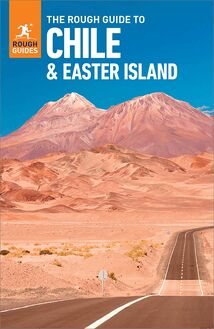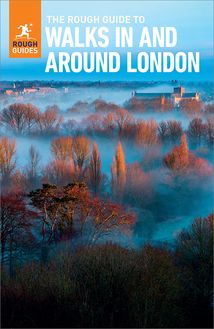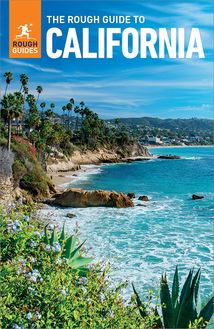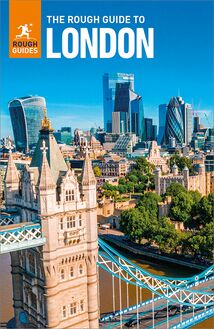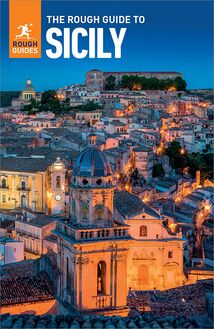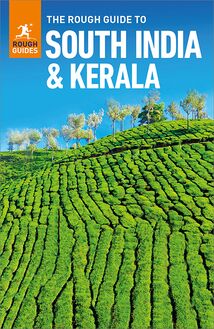The Rough Guide to the Philippines (Travel Guide eBook) , livre ebook
389
pages
English
Ebooks
2023
Vous pourrez modifier la taille du texte de cet ouvrage
Obtenez un accès à la bibliothèque pour le consulter en ligne En savoir plus
Découvre YouScribe en t'inscrivant gratuitement
Découvre YouScribe en t'inscrivant gratuitement
389
pages
English
Ebooks
2023
Vous pourrez modifier la taille du texte de cet ouvrage
Obtenez un accès à la bibliothèque pour le consulter en ligne En savoir plus
Publié par
Date de parution
01 avril 2023
Nombre de lectures
3
EAN13
9781839059247
Langue
English
Poids de l'ouvrage
30 Mo
This practical travel guide to the Philippines features detailed factual travel tips and points-of-interest structured lists of all iconic must-see sights as well as some off-the-beaten-track treasures. Our itinerary suggestions and expert author picks of things to see and do will make it a perfect companion both, ahead of your trip and on the ground. This Philippines guide book is packed full of details on how to get there and around, pre-departure information and top time-saving tips, including a visual list of things not to miss. Our colour-coded maps make the Philippines easier to navigate while you’re there. This guide book to the Philippines has been fully updated post-COVID-19.
The Rough Guide to THE PHILIPPINES covers: Manila; Northern Luzon; Southern Luzon; Mindoro; Boracay and the Western Visayas; Cebu and the Eastern Visayas; Palawan; Mindanao.
Inside this Philippines travel guide you’ll find:
RECOMMENDATIONS FOR EVERY TYPE OF TRAVELLER
Experiences selected for every kind of trip to the Philippines, from off-the-beaten-track adventures in Batanes to family activities in child-friendly places, like Tagaytay or chilled-out breaks in popular tourist areas, like Manila.
PRACTICAL TRAVEL TIPS
Essential pre-departure information including Philippines entry requirements, getting around, health information, travelling with children, sports and outdoor activities, food and drink, festivals, culture and etiquette, shopping, tips for travellers with disabilities and more.
TIME-SAVING ITINERARIES
Includes carefully planned routes covering the best of the Philippines, which give a taste of the richness and diversity of the destination, and have been created for different time frames or types of trip.
DETAILED REGIONAL COVERAGE
Clear structure within each sightseeing chapter of this Philippines travel guide includes regional highlights, brief history, detailed sights and places ordered geographically, recommended restaurants, hotels, bars, clubs and major shops or entertainment options.
INSIGHTS INTO GETTING AROUND LIKE A LOCAL
Tips on how to beat the crowds, save time and money and find the best local spots for hiking, diving, food, surfing or learning about history.
HIGHLIGHTS OF THINGS NOT TO MISS
Rough Guides' rundown of Cebu, the Eastern Visayas, Palawan and Mindanao’s best sights and top experiences helps to make the most of each trip to the Philippines, even in a short time.
HONEST AND INDEPENDENT REVIEWS
Written by Rough Guides’ expert authors with a trademark blend of humour, honesty and expertise, this Philippines guide book will help you find the best places, matching different needs.
BACKGROUND INFORMATION
Comprehensive 'Contexts' chapter of this travel guide to the Philippines features fascinating insights into the Philippines, with coverage of history, religion, ethnic groups, environment, wildlife and books, plus a handy language section and glossary.
FABULOUS FULL COLOUR PHOTOGRAPHY
Features inspirational colour photography, including the stunning Panglao Island and the spectacular Negros.
COLOUR-CODED MAPPING
Practical full-colour maps, with clearly numbered, colour-coded keys for quick orientation in Subic Bay, Donsol and many more locations in the Philippines, reduce the need to go online.
USER-FRIENDLY LAYOUT
With helpful icons, and organised by neighbourhood to help you pick the best spots to spend your time.
Publié par
Date de parution
01 avril 2023
Nombre de lectures
3
EAN13
9781839059247
Langue
English
Poids de l'ouvrage
30 Mo
Shutterstock
Shutterstock
TAOIST TEMPLE ON CEBU ISLAND
Contents
INTRODUCTION
Where to go
When to go
Author picks
Things not to miss
Itineraries
Sustainable Travel in the Philippines
Eco-Tourism Highlights
BASICS
Getting there
Getting around
Accommodation
Food and drink
Health
The media
Festivals
Outdoor activities
Spectator sports
Culture and etiquette
Shopping
Travel essentials
THE GUIDE
1 Manila
2 Around Manila
3 Northern Luzon
4 Southern Luzon
5 Mindoro
6 Boracay and the Western Visayas
7 Cebu and the Eastern Visayas
8 Palawan
9 Mindanao
CONTEXTS
History
Religious beliefs
Filipino arts and culture
Books
Language
Glossary
SMALL PRINT
Shutterstock
Introduction to
The Philippines
Separated from its Southeast Asian neighbours the Philippines has always been a little different. As the only Asian nation colonized by the Spanish, this lush archipelago of dazzling beaches, year-round sun and warm, turquoise waters remains predominantly Roman Catholic, and culturally – a blend of Islamic, Malay, Spanish and American influences – it often feels light years away from its neighbours, with a string of elegant colonial towns that have more in common with Latin America than the rest of Asia. It’s an enticing mix: all over the archipelago you’ll discover tantalizing food, friendly people and exuberant festivals. And the variety is astonishing: you can surf, island-hop or dive pristine coral reefs in the morning, and in the same day visit Indigenous villages, ancient rice terraces, historical cave systems and jungle-smothered peaks.
Indeed, the Philippines is often underrated and misunderstood by travellers and its Asian neighbours, casually dismissed as a supplier of maids, tribute bands, mail-order brides and corrupt politicians, epitomized by the gaudy excesses of Imelda Marcos. Don’t be put off: while poverty and corruption remain serious problems, the Philippines is far more complex – and culturally rich – than the stereotypes suggest.
The Filipino people are variously descended from early Malay settlers, Muslim Sufis from the Middle East, Spanish conquistadors and friars, and later, from Chinese traders. It’s an old cliché, but largely true: Filipinos take pride in making visitors welcome, even in the most rustic barangay home. Equally important is the culture of entertaining, evident in the hundreds of colourful fiestas that are held throughout the country, many tied to the Roman Catholic calendar. Never far behind partying is eating: Filipino food is heavily influenced by Spanish and native traditions – expect plenty of fresh fish, roasted meats (pork and chicken) and a plethora of addictive desserts, many utilizing the vast array of tropical fruits on offer.
Even the politics in Asia’s first democracy is rich in showmanship and pizzazz. From Ferdinand Marcos to the “housewife President” Cory Aquino to the controversial President Duterte, the country’s leaders have never been short on charisma. But despite impressive economic gains in the last twenty years, all have conspicuously failed to rid the country of its grinding poverty , visible everywhere you go in shanty towns and rickety barangay. Ordinary people somehow remain stoical in the face of these problems, infectiously optimistic and upbeat. This determination to enjoy life is a national characteristic, encapsulated in the common Filipino phrase bahala na – “what will be will be”.
FACT FILE The population of the Philippines was estimated to be over 115 million in 2022; half reside on the island of Luzon. The Philippines officially comprises 7641 islands, though the actual figure varies depending on the definition of “island”; reef tips and shoals number in the tens of thousands. The Philippines has one of the largest diasporas in the world; 11–12 million Filipinos live and work overseas, mostly as nurses, maids or on cruise ships. The richest individual in the Philippines is thought to be real estate tycoon and former politician Manuel B. Villar Jr, with a US$8.3 billion net worth – in a country where the average wage is less than US$300/month. Tanduay rum dates back to 1854, and today remains the nation’s spirit of choice. Made with sugar cane milled in Negros, it’s frequently cheaper than bottled water. Most Filipinos have at least one uncle or aunt named Boy, Girlie or Baby. Filipino and English are the official languages of the Philippines (Filipino is a standardized version of Tagalog), but there are at least 171 languages spoken throughout the archipelago, with Cebuano following Filipino in popularity.
Where to go
Most flights to the Philippines arrive in Manila , the crazy, chaotic capital which, despite first impressions, is worth at least a day or two of your time. The city’s major historical attraction is the old Spanish walled city of Intramuros , while the best museums in the country can be found in nearby Rizal Park and skyscraper-smothered Makati . There are also some worthwhile day-trips from the city; top of the list is the island of Corregidor in Manila Bay, which was fought over bitterly during World War II and, with its now-silent guns and ruins, is a poignant place to soak up the history of the conflict.
Within easy striking distance of Manila – about two hours south by road – a highlight of the province of Batangas is the city of Tagaytay and its mesmerizing views over Lake Taal , the picture-perfect crater lake with Taal Volcano in the middle. Around the small coastal town of Anilao you’ll find the best scuba diving near Manila, while the adjacent agricultural province of Laguna is known for its therapeutic hot springs and luscious buko (coconut) pies.
To the north of Manila the theme parks, beaches and wreck-dives of Subic Bay make a tempting break before the long bus ride to the extraordinary attractions and spell-binding mountain scenery of northern Luzon . From the mountain city of Baguio , it’s a rough but memorable trip north along winding roads to Indigenous communities such as Sagada , known for its hanging coffins, and Banaue , where you can trek through awe-inspiring rice-terrace countryside. Off Luzon’s northern tip are the alluring islands of Batanes , one of the country’s greatest secrets, while along Luzon’s west coast you can surf around San Fernando or explore the ravishing colonial town of Vigan , a UNESCO World Heritage Site.
Head south from Manila through the Bicol region and you’ll reach perhaps the best-known of Philippine volcanoes, Mayon , an almost perfect cone that towers over the city of Legazpi and is a strenuous four- or five-day climb. Around Donsol you can swim with whale sharks, and in Bulusan Volcano National Park trek through lush rainforest to waterfalls, hot springs and volcanic craters. Even further off the tourist trail, Catanduanes offers excellent surfing, while Marinduque is a pastoral island backwater that only gets touristy for the annual Moriones festival , held at Easter.
For most visitors, the myriad islands and islets of the Visayas , right at the heart of the archipelago, are top of the agenda. In the Western Visayas, the captivating little island of Boracay , with its pristine beach, is on almost everyone’s itinerary, but if Boracay is too touristy for you, try laidback Siquijor or tiny Apo Island near Negros, a marine reserve where the only accommodation is in rustic cottages. For even less developed spots, head over to the Eastern Visayas for Panglao Island off Bohol, or the tantalizing beaches and waters of Malapascua off the northern tip of Cebu Island. For trekking and climbing make for Mount Kanlaon National Park on Negros, one of the country’s finest wilderness areas. The largest city in the Visayas is Cebu City , the arrival point for a limited number of international flights – as well as a major hub for domestic airlines – making it a good alternative base to Manila. It’s friendly, affordable and has a buzzing nightlife scene, with great restaurants and live music.
JEEPNEYS
Millions of Filipinos depend on jeepneys – a kind of informal minibus service – to get to school and the office, or to transport livestock to market. Jeepneys are able to operate where roads are too narrow for regular buses, and as a result most travellers end up using them at least once. Despite the discomfort, for many it’s one of the highlights of their trip – a genuine slice of Filipino life.
The original jeepneys, cannibalized from vehicles left behind by departing Americans at the end of World War II, have evolved over the past six decades into the mass-produced versions that you see on the streets today, decorated with chrome trinkets, blinking fairy lights and images of celebrities. Others sport religious mottos, crucifixes and images of saints, perhaps understandable given the high accident rates they rack up.
Shutterstock
DIVE PARADISE
The Philippines is blessed by a dazzling richness and diversity of marine life and diving is one of the most popular activities in the archipelago. Under the waves lies an underwater wonderland of stupefying coral gardens teeming with brilliantly coloured reef fish, turtles, giant clams and starfish, while at depth there are giant rays and prowling sharks. Indeed, this vast tropical archipelago is at the heart of Southeast Asia’s “coral triangle”, the most biologically diverse marine ecosystem on earth, with over 300 types of coral and 350 fish species. Diving here is affordable and, thanks to warm waters, can be enjoyed year-round. If you’re serious about your diving, booking a trip on a liveaboard 52 )--> can be a memorable experience, giving you the opportunity to get away from the more popular dive resorts and explore the wilderness.
Shutterstock
If you’re looking for some serious diving, head for Puerto Galera on the northern coast of Mindoro Island . It also boasts some excellent beaches and trekking through the jungles of the interior to tribal communities.

